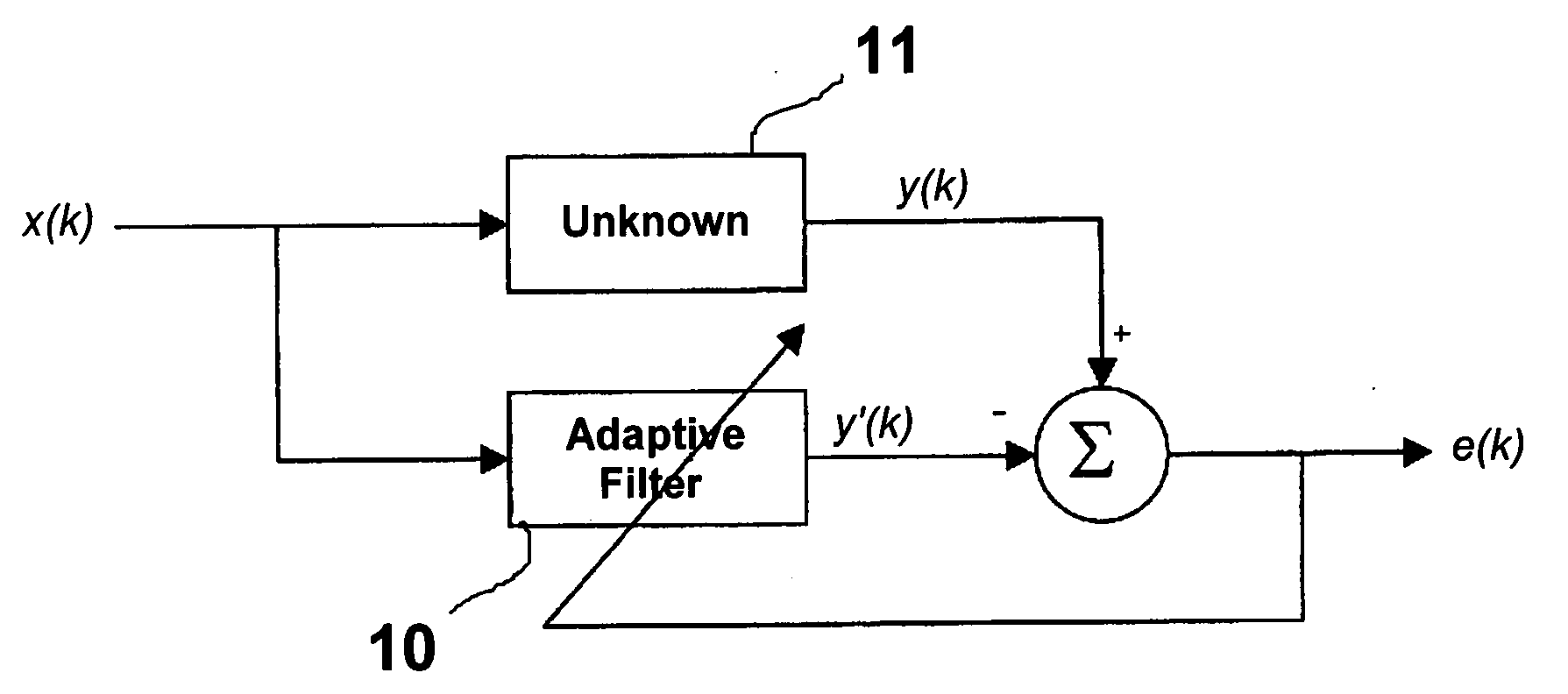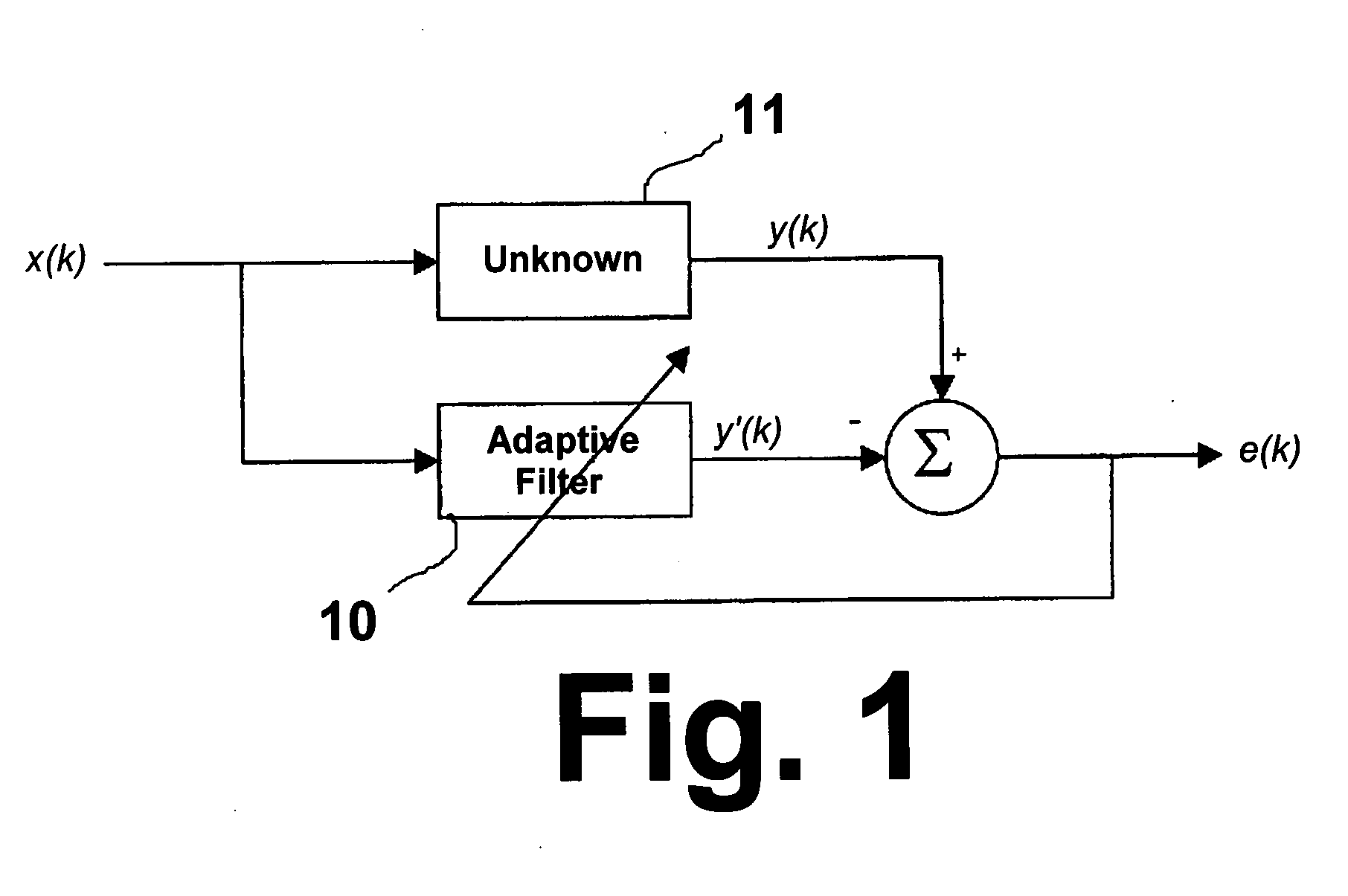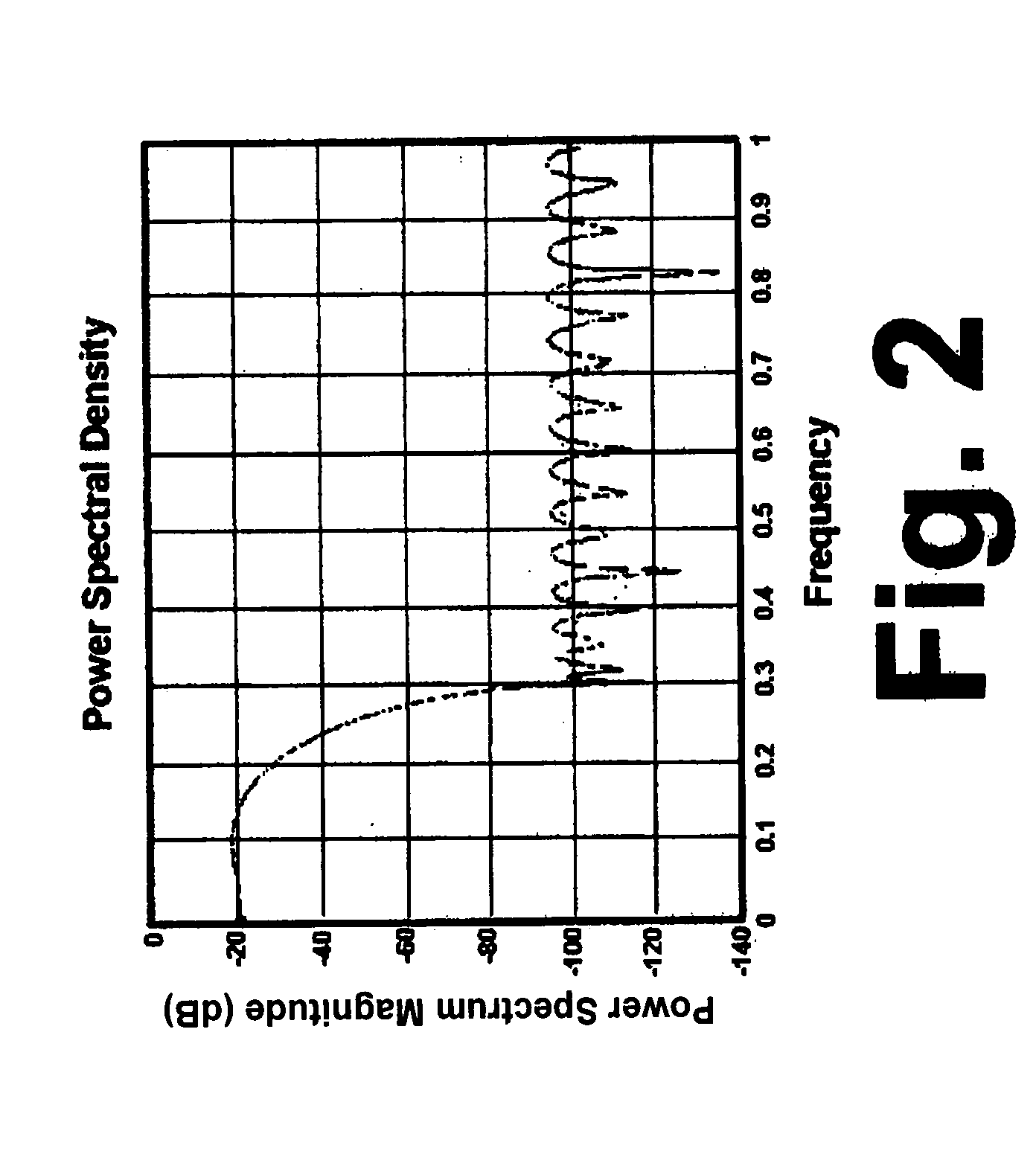Method and apparatus for enhanced convergence of the normalized LMS algorithm
a normalized lms algorithm and enhanced convergence technology, applied in the field of adaptive filters, can solve the problems of not quite accurate terms, not good upper bounds, and most research does not differentiate between variable update gain and non-uniform update gain, and achieve the effect of increasing the convergence rate of the normalized lms algorithm
- Summary
- Abstract
- Description
- Claims
- Application Information
AI Technical Summary
Benefits of technology
Problems solved by technology
Method used
Image
Examples
example
[0021]In this example, the unknown system 11 was modeled as a low-pass function with a power spectral density as shown in FIG. 2 and an impulse response as shown in FIG. 3. A 256-coefficient adaptive filter, having a specified limit of
∑i=1Nμi=256
instead of the traditional limits, was allowed to converge using a constant, uniform update gain of 1 and two non-uniform update gains. The non-uniform update gains were a constant value for active coefficients of the adaptive filter and a value of substantially zero for the non-active coefficients of the adaptive filter. The values used for the non-uniform update gains were 1 and 7.
[0022]FIG. 4 is a diagram showing comparative convergences of the adaptive filter using these three update gain parameters. As shown therein, the algorithm using an update gain of 7, which is very much higher than the accepted upper bound, converged substantially faster than the algorithm employing the other two update gains. Also as shown therein, the algorithm ...
PUM
 Login to View More
Login to View More Abstract
Description
Claims
Application Information
 Login to View More
Login to View More - R&D
- Intellectual Property
- Life Sciences
- Materials
- Tech Scout
- Unparalleled Data Quality
- Higher Quality Content
- 60% Fewer Hallucinations
Browse by: Latest US Patents, China's latest patents, Technical Efficacy Thesaurus, Application Domain, Technology Topic, Popular Technical Reports.
© 2025 PatSnap. All rights reserved.Legal|Privacy policy|Modern Slavery Act Transparency Statement|Sitemap|About US| Contact US: help@patsnap.com



